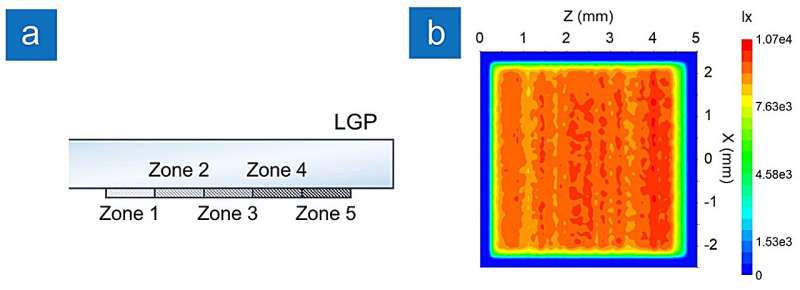Augmented reality (AR) and virtual reality (VR) are innovative display technologies with the ability to revolutionize the way we interact and experience the world.
Unlike VR, which immerses users in entirely virtual environments, AR superimposes digital content onto the real world, enabling vast applications in education, training, retail, marketing, and navigation, just to name a few. AR experiences can be accessed through various devices, including smartphones, tablets, and smart glasses.
Among these, stylish AR glasses will become the mainstream as they offer unparalleled convenience and immersion, lightweight and compact formfactor, seamlessly integrating digital content into the real world.
AR glasses usually consist of two main components: a light engine, responsible for generating digital images, and an optical system, which delivers the generated content to the users. Different optical systems such as birdbath optics and waveguide optics have been applied in commercial products.
The light engines must be very compact while keeping a high optical efficiency to enable longtime comfortable wearing and high ambient contrast ratio.
“Liquid-crystal-on-silicon (LCoS) or micro-LED, who wins?” has become a heated debate question. Micro-LED display is an emissive technology that promises to revolutionize visual experiences with high peak brightness, fast response time, true dark state, and long lifetime. However, its manufacturability remains a significant challenge.
On the other hand, LCoS is a non-emissive reflective microdisplay, which requires a front illumination system. Conventional LCoS system is facing tremendous challenges due to its bulky illumination system. To achieve high optical efficiency, it often incorporates a bulky polarizing beam splitter (PBS) cube. Therefore, achieving an ultracompact yet high-efficiency illumination system for LCoS based AR glasses is in urgent demand.
To minimize the formfactor of the LCoS system, researchers have proposed an ultracompact illumination system with a light guide plate (LGP) to efficiently direct the employed light source to the LCoS panel.
Their study is published in Opto-Electronic Advances.

The light from the light source, e.g., an LED array or laser diodes, is coupled into the LGP using an in-coupling prism. Next, the in-coupled light propagates inside the LGP due to total internal reflection (TIR) at the top and the bottom surfaces. Some of the trapped light enters the extraction prisms, while propagating along Z direction and the remaining light continues to propagate forward in the LGP.
The light inside the extraction prism is reflected toward the bottom LCoS panel through another TIR at the tilted surface of the prism. A similar concept has also been proposed by Prof. Wu’s group to generate uniform illumination for liquid crystal displays.
The LCoS panel manipulates the polarization states pixel-by-pixel and reflects the incoming light back to LGP. Most of the reflected light with encoded information will transmit through the LGP and a clean-up polarizer on the top, and finally enters the projection lens system, which in turn will be coupled into the subsequent optical combiner of the AR system.
The researchers say that the quarter-wave plate (QWP) is optional, depending on the employed LC mode. For example, if a normally black vertical alignment (VA) LCoS is used, then the circularly polarized light after the QWP helps circumvent the fringe field effects.
On the other hand, the normally white MTN (Mixed-mode Twisted Nematic) LCoS can take either linearly or circularly polarized light. In Magic Leap 2, circular polarization is chosen to mitigate the stray light from surface reflections in the projection system. Another advantage of MTN is its fast response time (~1ms) and weak fringe field effect.
The authors also conducted vast optimizations for the system structure to improve the overall performance. For example, the extraction prisms are divided into several zones with different fill factor to ensure the illumination uniformity. Optimizations on the system configuration and size of each component have been conducted to achieve an excellent illuminance uniformity and high ANSI contrast ratio, which is equal or better than the contrast ratio of the LCoS panel.
Moreover, the outstanding color performance is demonstrated by taking the refractive index dispersion of the glass material into consideration. Additionally, plastic material with a lower refractive index n = 1.7 can also be employed for lowering the cost.
Its optical performance is acceptable, although a higher-index material is preferred. Such a slim formfactor and high optical efficiency are expected to make a big impact to next-generation lightweight and low power AR glasses.
More information:
Zhenyi Luo et al, Ultracompact and high-efficiency liquid-crystal-on-silicon light engines for augmented reality glasses, Opto-Electronic Advances (2024). DOI: 10.29026/oea.2024.240039
Provided by
Compuscript Ltd
Citation:
Ultracompact and high-efficiency liquid-crystal-on-silicon light engines for augmented reality glasses (2024, June 14)
retrieved 16 June 2024
from https://phys.org/news/2024-06-ultracompact-high-efficiency-liquid-crystal.html
This document is subject to copyright. Apart from any fair dealing for the purpose of private study or research, no
part may be reproduced without the written permission. The content is provided for information purposes only.

